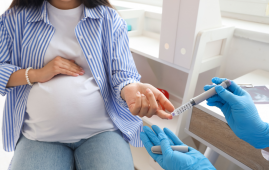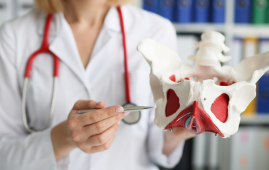

In a breakthrough led by Baylor College of Medicine, researchers have used Cell Painting technology to uncover plant-based flavonoids with the potential to treat bladder cancer. This innovative approach, which uses advanced microscopy and AI-driven analysis, allowed the team to screen hundreds of compounds and identify six with cancer-killing capabilities.
Cell Painting Enables Detailed Cellular Analysis
Cell Painting is a high-throughput imaging method that highlights cellular structures, helping scientists observe how individual cells respond to different compounds. With over 57,000 images per test plate, analyzing this data manually would be impossible. That’s where SPACe (Swift Phenotypic Analysis of Cells) comes in—a tool designed to handle this data using standard desktop computers.
Flavonoids Show Promise Against Bladder Cancer
Using SPACe, researchers screened 244 flavonoid compounds in bladder cancer cell lines. They identified six that killed cancer cells—two were already known (flavopiridol and rotenone), while four were novel candidates. These flavonoids work through different mechanisms, including damaging DNA or disrupting mitochondria—the energy hubs of the cell.
Notably, three flavonoids were found effective in 3D cancer models but didn’t harm normal bladder cells, highlighting their therapeutic promise.
Xanthohumol and the Beer Connection
Among the most interesting compounds was xanthohumol, a flavonoid present in certain beers. Researchers observed that it significantly reduced lipid metabolism in bladder cancer cells, leading to cell death. The team now wonders if regular consumption of xanthohumol-rich beer correlates with lower bladder cancer rates—a question for future epidemiological studies.
What’s Next in Flavonoid Cancer Research?
Future work will involve testing these promising flavonoids in animal models and eventually in clinical trials. The ultimate goal: to integrate safe, plant-derived compounds into modern cancer treatment strategies and improve outcomes for patients with bladder cancer.
Natural Compounds, High-Tech Tools, Big Impact
This study is a prime example of how Cell Painting and accessible computational tools can speed up the discovery of new therapies. By combining nature’s chemistry with state-of-the-art imaging and analysis, researchers are paving the way for safer, more targeted cancer treatments.
For more information: Bolt, M. J., et al. (2025). A phenotypic screen identifies xanthohumol and other flavonoids as killers of bladder cancer. Pharmacological Research – Natural Products. doi.org/10.1016/j.prenap.2025.100236.
more recommended stories
 Fat-Regulating Enzyme Offers New Target for Obesity
Fat-Regulating Enzyme Offers New Target for ObesityKey Highlights (Quick Summary) Researchers identified.
 Spatial Computing Explains How Brain Organizes Cognition
Spatial Computing Explains How Brain Organizes CognitionKey Takeaways (Quick Summary) MIT researchers.
 Gestational Diabetes Risk Identified by Blood Metabolites
Gestational Diabetes Risk Identified by Blood MetabolitesKey Takeaways (Quick Summary for Clinicians).
 Phage Therapy Study Reveals RNA-Based Infection Control
Phage Therapy Study Reveals RNA-Based Infection ControlKey Takeaways (Quick Summary) Researchers uncovered.
 Pelvic Floor Disorders: Treatable Yet Often Ignored
Pelvic Floor Disorders: Treatable Yet Often IgnoredKey Takeaways (Quick Summary) Pelvic floor.
 Urine-Based microRNA Aging Clock Predicts Biological Age
Urine-Based microRNA Aging Clock Predicts Biological AgeKey Takeaways (Quick Summary) Researchers developed.
 Circadian Control of Neutrophils in Myocardial Infarction
Circadian Control of Neutrophils in Myocardial InfarctionKey Takeaways for HCPs Neutrophil activity.
 E-Cigarette Use and Heart Attack Risk in Former Smokers
E-Cigarette Use and Heart Attack Risk in Former SmokersKey Takeaways for Clinicians and Nurses.
 36-Week Pre-eclampsia Screening May Reduce Term Risk
36-Week Pre-eclampsia Screening May Reduce Term RiskA New Preventive Strategy for Term.
 Cardiovascular Risk and Sudden Cardiac Death in Diabetes
Cardiovascular Risk and Sudden Cardiac Death in DiabetesRising Sudden Cardiac Death (SCD) Risk.

Leave a Comment